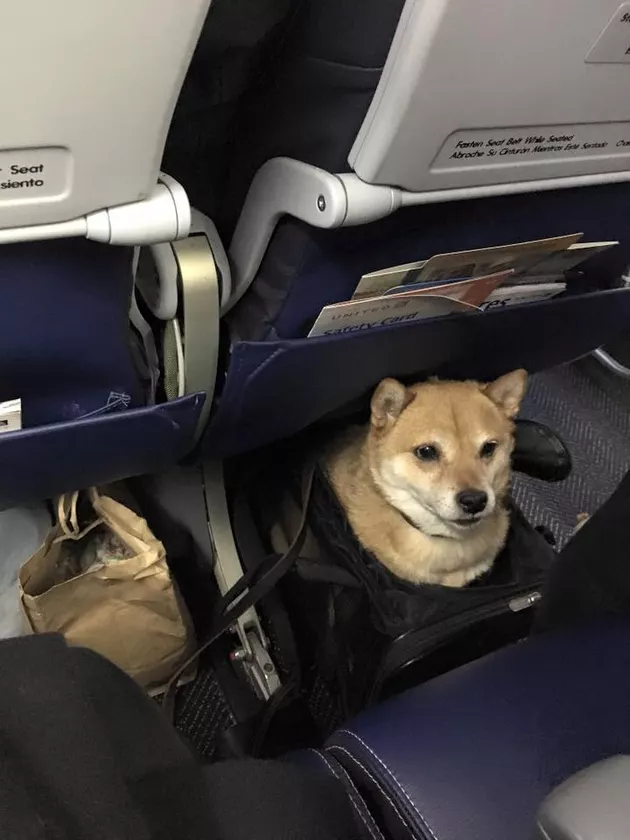Dog / Detail
A Pawsitively Perfect Flight: Preparing Your Dog for Air Travel
Jonathan Bennet | 12 September 2024 | 12:05
Whether you're embarking on a family vacation or a work trip, traveling with your furry companion can be an unforgettable experience.
However, air travel can be stressful for both you and your dog. By following these guidelines, you can ensure a safe and comfortable journey for your canine friend.

Health and Vaccinations
- Consult Your Veterinarian: Before booking your flight, schedule a thorough check-up with your veterinarian. They'll assess your dog's overall health and determine if they're fit to fly.
- Required Vaccinations: Ensure your dog is up-to-date on all necessary vaccinations, including rabies, distemper, parvovirus, and kennel cough. Some countries may have additional requirements, so check with the local embassy or consulate.
- Health Certificate: Obtain a health certificate from your veterinarian, stating that your dog is healthy and free from contagious diseases. This certificate is typically required by airlines and customs officials.

Choosing the Right Airline and Carrier
- Airline Regulations: Research airline policies regarding pet travel. Some airlines have restrictions on breed, size, or age, while others may charge additional fees.
- Carrier Requirements: Select a carrier that meets your airline's specifications and provides your dog with enough space to stand, sit, and turn around comfortably.
Hard-sided carriers are generally preferred for air travel. - Practice Time: Acclimate your dog to the carrier well in advance of the flight. Make it a positive experience by rewarding them with treats and praise.

- Microchipping: Consider microchipping your dog to help identify them in case they get lost.
- Identification: Attach a collar with your contact information and your dog's microchip number.
- Packing Essentials: Pack your dog's essential items, including food, water, toys, and a blanket. Consider bringing along a favorite toy or blanket to provide comfort and familiarity.
- Feeding and Hydration: Feed your dog a light meal several hours before the flight to avoid stomach upset. Ensure they have access to fresh water throughout the journey.

Airport Procedures
- Arrival Time: Arrive at the airport early to allow ample time for check-in and security procedures.
- Check-In: Inform the airline representative that you're traveling with a pet and provide the necessary documentation.
- Security Screening: Your dog will need to go through security screening. Some airports may require you to place your dog in a separate screening area.
- Boarding: Follow the airline's instructions for boarding the plane. Your dog will typically be placed in the cargo hold or under the seat, depending on the airline's policies.

In-Flight Care
- Comfort: Ensure your dog is comfortable in the carrier. Consider providing a soft blanket or cushion for added padding.
- Noise Reduction: If your dog is sensitive to noise, you might want to bring earplugs or a calming aid to help them relax.
- Stress Relief: Consider using calming pheromones or supplements to help your dog cope with stress during the flight.
- Emergency Contact: Keep your emergency contact information readily available in case of any issues.

Arrival and Quarantine
- Customs Inspection: Upon arrival, your dog may be subject to customs inspection. Be prepared to provide the necessary documentation.
- Quarantine Requirements: Some countries may have quarantine requirements for imported pets. Research the specific regulations for your destination.
- Adjustment Period: Allow your dog time to adjust to their new surroundings after the flight. Provide plenty of love, attention, and exercise to help them settle in.

Additional Tips
- Practice Crate Training: Ensure your dog is well-trained to stay in their crate. This will make the flight experience much less stressful.
- Socialization: If your dog is not used to being around other animals or people, consider socialization training to help them feel more comfortable in new environments.
- Consider a Pet-Friendly Destination: Choose a destination that is pet-friendly to make your trip more enjoyable for both you and your dog.
By following these guidelines and providing your dog with the necessary care and attention, you can ensure a safe and enjoyable travel experience for both of you.
Remember, the key to a successful trip is planning ahead and making your dog's comfort and well-being a top priority.
Related
-

The Healing Power of Dogs: How Canine Therapy is Revolutionizing Mental Health and Boosting Positive Energy in Humans
Dog14 November 2024
-

A Pawsitive History: Dogs of Nuremberg
Dog09 November 2024
-

The Role of Oxytocin in the Human-Dog Bond: The Science Behind Our Deep Connection
Dog06 November 2024
-

Beyond the Beach: Jamaica's Dog Lovers
Dog29 October 2024
-

A Dog's Delights: Homemade Snacks for Our Furry Babies, Recipes Included!
Dog29 October 2024
-

A Dog's Disorientation: Understanding Your Dogs' Wanderlust
Dog29 October 2024
Popular
-

-

A Pawsitive History: Dogs of Nuremberg
09 November 2024 -

-

Beyond the Beach: Jamaica's Dog Lovers
29 October 2024 -
